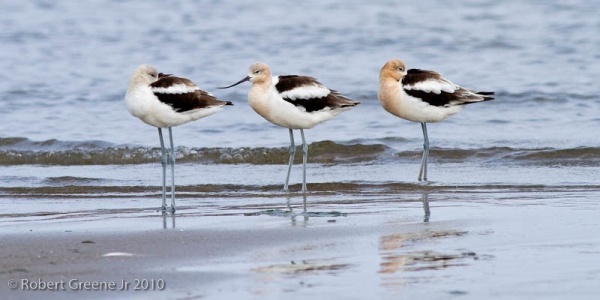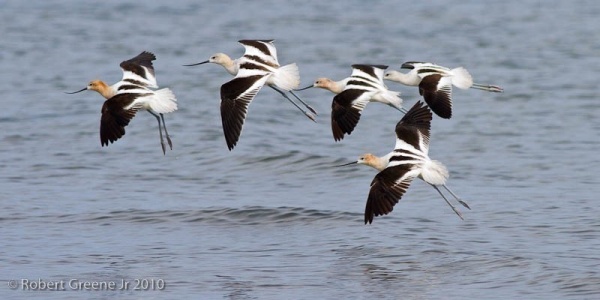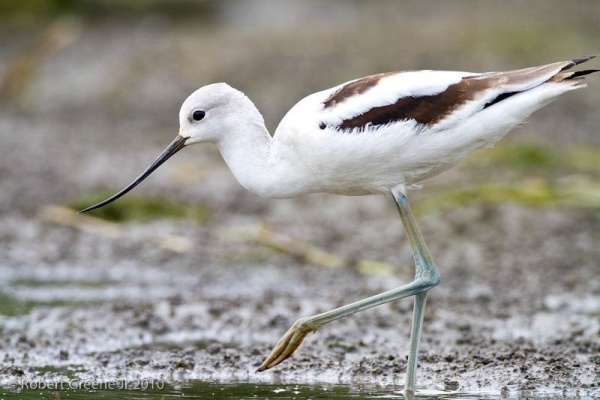
Birds molt at least once a year to replace worn out feathers. This process permits them to wear different plumages.
Some birds, like the American robin, look the same before and after. Others radically change their appearance by replacing their fancy breeding feathers with plainer plumes. Male scarlet tanagers are an extreme example: They’re red while breeding and green while not.
Molt and plumage terminology was standardized in 1959 by Humphrey and Parkes who divided plumage names into three main types. (*)
- Juvenile plumage is worn by young fledged birds.
- Basic plumage is what birds acquire during their annual post-breeding molt. We often call this “non-breeding” or “winter” plumage but these terms are inaccurate. Adult robins are always in basic plumage even when they’re breeding, and “winter” describes the weather North America is experiencing while the bird is away. To South American birders, a green scarlet tanager is in summer plumage.
- Alternate plumage is optional. Some birds don’t undergo a second molt but those who do put on their finest feathers in time for the breeding season. This is often called breeding plumage.
In some species it takes several years for the young to mature so they progress through as many plumage cycles as it takes to become adults. Young ring-billed gulls go through three cycles: Basic 1, Alternate 1, Basic 2, Alternate 2, Basic 3, Alternate 3. Gulls are complicated.
American avocets aren’t quite so complex. They molt their wing feathers once a year but change out their head and neck feathers twice a year from basic plumage (white) to alternate plumage (ochre) for the breeding season.
The avocets above are lined up in perfect sequence during their post-breeding molt in August. The bird standing on the left is closest to basic plumage, the bird on the right is closest to alternate plumage, and the bird in the middle is halfway between.
Below, another flock has the lead bird closest to alternate plumage and the trailing bird closest to basic.

Look closely at each bird and you can see that the wings of the 1st, 3rd and 4th birds have ragged trailing edges because they’re molting their wing feathers. The 2nd and last birds have perfect wings, so my guess is that they’re juveniles. Juveniles don’t molt their fresh new wing feathers until they’re a year old.
When avocets have completed their molt into basic plumage their heads and necks are gray-white like this bird photographed in September.

Experts in molt and plumage can probably tell the age of these birds by their appearance.
Not I. Aging shorebirds by plumage is my final frontier.
(Inspiration for this Tenth Page is from page 110 of Ornithology by Frank B. Gill.
All photos by Bobby Greene)
(*) If you’re a plumage expert, please feel free to correct me. I’m still learning!
P.S. TO PEREGRINE FANS: Molting is a wonderful thing. Last May the male peregrine at Pitt, E2, chased off an intruder but not before this opponent damaged one of his primary feathers. This gave him a “hole” in his wing. Over the summer he completed his annual pre-basic molt and grew all new feathers. Now his wings are perfect. No gap.
The first time I heard of an eagle molting was in Christian sermon. The minister used the molting process of the eagle in comparison to renewal in the life of a Christian. The molting process seems to be horrific and not scientifically documented since it’s done in private. The 12 steps of the molting eagle:
1.Over time, the beak and talons of an eagle become encrusted with calcium. Thus, they are not as sharp as they once were.
2.Their feathers become weighed down with dirt and oil. When these things take place, it obviously hinders their ability to hunt effectively. With all of the dirt and oil on its feathers, an eagle will begin to “whistle” while it is diving on its prey. With this sound coming from a bird, it makes hunting ineffective because the prey can hear them coming and have more time to run and hide before they are snatched up.
3. When an eagle gets to this point in its life, it will descend from the heights above and go to a rock below.
4. Through the molting process, the eagle begins to lose its feathers by plucking them out one by one.
5. Not only will an eagle pluck out all of its feathers, it will actually break off its beak by smashing it on a rock.
6. It will rub its talons on the rock to rub them down until they are nubbins.
7. Its vision is even said to be impaired, so they don’t have as keen as eyesight as before.
8. At this point, the eagle becomes weak, vulnerable, and defenseless.
9. Many eagles die during this point in life because they can not hunt for themselves and they can’t protect themselves against predators.
10. During this time, many eagles become dependent on their companion eagles for sustenance and nourishment.
11. If they can survive the shame and exposure that molting produces, then the stripping process will pave the way for the eagle to become greater and stronger than it was before.
12. It is during this time that a wonderful thing happens to those who survive. Their feathers, beak, and talons begin to grow back with greater vigor than ever before. Their beak and talons will be as sharp as ever and they will once again take to the skies. They will have acquired revitalized youth that they hadn’t possessed since they were younger.
Is this true or just an Christian analogy?
This is a nice metaphor for spiritual rebirth but it is not true for eagles. Snopes.com is not sure where the myth began but it was promulgated by a slideshow that was first popular in 2007. Here’s the Snope report:
http://www.snopes.com/critters/wild/eaglerebirth.asp
In reality eagles molt only a few feathers at a time. They don’t pluck them out by force.
According to Cornell’s Birds of North America Online (paraphrased), bald eagles’ annual molt begins in the spring with head and neck feathers. Body and flight-feathers molt later. Finally the tail feathers molt in late Jul–early Aug. Their molt is completed by late fall.
Thus, eagles molt once a year over a period of about 7 months. Their molt does not interfere with their daily activities. Their beaks are not involved.